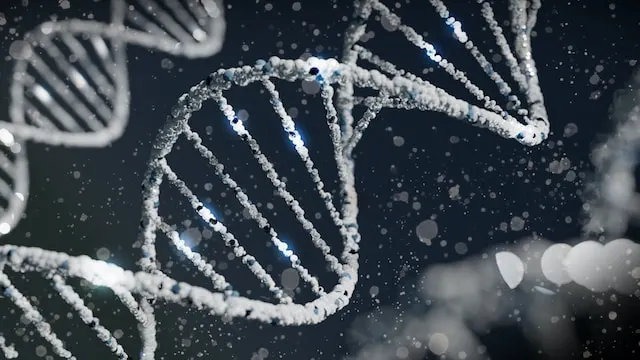The Dark Side of the Brain: The Neuroscience of Violence and War
This article has been written to investigate the neuroscience of violence. But let me explain first how I came to this topic.
As I sit down to pen this article, the haunting echoes of conflict reverberate from the heart of the Middle East. Israel and Gaza are once again engulfed in a war that has taken countless innocent lives and left scars that might never truly heal. The images of devastation, the heart-wrenching stories of families torn apart, and the relentless cycle of violence have left an indelible mark on my psyche.
It’s in these moments of profound reflection that I find myself grappling with a question that has, perhaps, haunted humanity since the dawn of time:
- What is it within us that can drive us to such extremes of violence, to the point of taking another’s life?
- What transforms ordinary individuals into agents of destruction?
- Can we define this kind of behavior?
- After all, what is the neuroscience of violence?
With a heavy heart and a quest for understanding, I attempted to examine the intricate tapestry of neuroscience, psychology, and sociology to understand human aggression and violence.
The truth is that I only scratched the surface.
The Brain’s Role in Aggression
The human brain, a marvel of evolution, is capable of love, empathy, and creativity. Yet, it also harbors the potential for violence, aggression, and even heinous war crimes.
And when it comes to the brain’s role in aggression, two are the key brain parts: the amygdala and prefrontal cortex.

The amygdala plays a pivotal role in processing emotions, especially fear and aggression. When stimulated, it can evoke violent reactions. Conversely, the prefrontal cortex, responsible for impulse control and moral reasoning, can inhibit aggressive behaviors.
Amygdala and Aggression
The amygdala is especially active when we experience fear or perceive threats. It helps us recognize potential dangers and prepares our body to respond, either by confronting the threat (fight) or fleeing from it (flight).
Hence, direct stimulation of the amygdala can result in aggressive behaviors. This is because the amygdala can evoke strong emotional reactions without the moderating influence of other brain regions.
And because the amygdala plays a role in associating certain stimuli with emotional responses based on past experiences, it might trigger an aggressive response when encountering a known stimulus!
The Prefrontal Cortex and Impulse Control
On the other side, the prefrontal cortex (PFC) is responsible for weighing the consequences of actions, making decisions, and inhibiting inappropriate or socially unacceptable behaviors.
While the amygdala might trigger an aggressive response, the PFC can act as a brake, evaluating whether this response is appropriate. If the PFC determines that aggression is not the best course of action, it can inhibit the amygdala’s response, preventing aggressive behavior.
Neurotransmitters of Violence
Serotonin, the “feel-good” neurotransmitter, and Dopamine, the neurotransmitter of reward, strangely play a significant role in the neuroscience of violence.
But how?
Serotonin and Violence
Serotonin is a neurotransmitter that plays a multifaceted role in the brain, influencing mood, appetite, sleep, and more.
We all know that low levels of serotonin in the brain have been linked to various mood disorders, including depression. But what we might not know is that, additionally, serotonin deficiency is associated with increased impulsivity!
While the exact mechanisms are still being researched, low serotonin levels are believed to reduce the brain’s ability to regulate anger and aggressive responses.
Even some studies in humans have found that individuals with a history of violent behavior have lower levels of serotonin.
Dopamine and Aggression
Dopamine plays a central role in the brain’s reward system. When we engage in activities that are pleasurable or beneficial for survival, dopamine is released, giving us a feeling of satisfaction. Then the craving for this “high” will make us repeat the relevant behavior.
But what happens when aggression becomes a rewarding behavior?
Acts of dominance or achieving a goal through aggression can lead to a dopamine release. This creates a reinforcing loop: the aggressive act leads to a dopamine “high,” which in turn makes the individual more likely to engage in such behavior again.
If an individual repeatedly experiences a dopamine release after violent acts, these behaviors can become reinforced. Over time, the brain starts associating aggression with reward, making it more challenging to inhibit such behaviors.

Is there a genetic predisposition to violence?
There is evidence to suggest that genetic factors can influence an individual’s predisposition to violent or aggressive behavior.
First of all, several genes have been studied in relation to aggressive behavior. The most known of them is the MAOA Gene, the “warrior gene”.
What is the MAOA Gene?
Monoamine Oxidase A (MAOA) is an enzyme responsible for breaking down neurotransmitters like serotonin, dopamine, and norepinephrine in the brain. The gene that codes for this enzyme is the MAOA gene, located on the X chromosome.
The MAOA gene has different variants, and studies have shown that individuals with the MAOA-L variant are more prone to aggressive behavior, especially when exposed to adverse environmental factors. This variant results in reduced MAOA enzyme activity, leading to altered neurotransmitter levels in the brain.
Twin and Adoption Studies
Twin and adoption studies provide valuable insights into the nature vs. nurture debate.
These studies have shown:
- Higher Concordance Rates: Identical twins (who share 100% of their genes) often have higher concordance rates for aggressive behavior compared to fraternal twins (who share about 50% of their genes). This suggests a genetic component to aggression.
- Adoption Studies: Children who are biologically related to a violent parent but are raised by non-violent adoptive parents still have an increased risk of violent behavior, further pointing to a genetic influence.

However, it’s crucial to understand that genetics is just one piece of a complex puzzle. Behavior, including violent behavior, is the result of a multifaceted interplay between genetics, environment, upbringing, personal experiences, and other factors.
The Role of Childhood Trauma
The relationship between the MAOA gene and aggression becomes particularly pronounced when considering environmental factors. Childhood trauma can lead to epigenetic changes that influence behavior, including aggression.

Research has indicated that individuals with the MAOA-L variant who have experienced childhood trauma or maltreatment are more likely to exhibit violent or antisocial behavior in adulthood.
The Environment’s Role in Shaping Behavior
Growing up in war-torn regions, experiencing abuse, or being exposed to violent ideologies can shape the brain’s neural pathways, making aggressive responses more likely.
If you are someone who has been exposed to psychotherapy, you probably realize that a significant part of your personality and the way you perceive the world is because of some childhood experiences.
You might passed an extended period of acne, you have been bullied in school, or maybe you felt that the new baby in the family is taking all the attention. I can write forever!
The point is that all these experiences sculptured you and your world perspective.
Now imagine this: You were born in a place of poverty. You and your family fought to survive. You had experiences of terror, bombed cities, and killed people. Not only you have seen hell, but you lived in it! And on top of all of these, you learned from an early age, and have often been reminded, that there is an enemy. An enemy that is so evil to do all these cruel things to you and your people. This enemy is the devil! And usually, it is not one person but a whole race of humans.
Now, after reading this. Still wondering why these people can now go to extremes without a second thought?
The brain, in its adaptability, responds to its environment, and repeated exposure to violence can reinforce neural pathways associated with aggression.
The Habit Loop and Violence
Moreover, drawing from the neuroscience behind habit formation, violent behaviors, once initiated and rewarded, can become habitual. The brain begins to associate certain cues (like threats to power or territory) with violent responses, especially if these responses have previously resulted in desired outcomes
Dehumanization and War Crimes
One of the most critical aspects of war crimes, and not only, is the dehumanization of the “enemy.” Dehumanization has been used many MANY times historically either as a propaganda lever, to make acts of violence against specific groups more acceptable, or in war situations where soldiers can distance themselves from the moral implications of their actions.
What is Dehumanization?
Dehumanization refers to the psychological process of viewing others as less than human. This can manifest in various ways, such as seeing others as animals, objects, or even as evil entities.
The Neuroscience of Dehumanization
Empathy, the ability to understand and share the feelings of another, is associated with specific brain regions, including the anterior insula and the anterior cingulate cortex. When we empathize with someone, these areas become more active.
Neuroscientific studies have shown that when individuals view others as “less than human,” there’s reduced activity in the brain regions associated with empathy. This means that the natural human response to the suffering of others is diminished.
Dehumanizing others not only reduces empathy but also activates brain regions associated with feelings of disgust, primarily the insula. Disgust is a powerful emotion that can distance us from its source, making negative actions towards the “disgusting” entity more justifiable. Don’t believe me? A butterfly and cockroach are the same harmless, yet how many butterflies have you ever killed?
Consequently, when empathy is reduced, and disgust is heightened, acts of violence against the dehumanized group become more palatable. The natural inhibitions or moral reservations against harming others are weakened, making these heinous acts become more justifiable in the minds of the perpetrators.
The Group Mentality
The brain is wired for social connection and belonging. In war scenarios, group ideologies can override individual moral reasoning.
The desire for group acceptance, combined with a dehumanized view of the enemy, can lead to conformity with violent group norms.

The Biochemistry of War
Last but not least we should consider the brain’s response to high-stress situations. When faced with immediate threats, the adrenal glands release adrenaline. This hormone prepares the body to either confront the threat (“fight”) or flee from it (“flight”).
Adrenaline causes several physiological changes:
- Increased Heart Rate: To pump more blood and provide oxygen to muscles.
- Dilated Pupils: To take in more light and improve vision.
- Redirected Blood Flow: Blood is directed away from less crucial functions (like digestion) to muscles, preparing the body for action.
- Heightened Awareness: The senses become more acute, and reaction times decrease.
Through these physiological changes, adrenaline increases reactivity and can lead to heightened aggression. The immediate need for survival can override the brain’s usual inhibitory checks. This means that actions can be taken more impulsively, without the usual moral or ethical considerations.
Neuroscience of Violence – Takeaway
The brain, in all its complexity, holds the keys to our most compassionate acts and our most heinous crimes. The neuroscience of violence offers insights, but it also presents challenges. As we stand at the crossroads of biology and morality, it’s imperative to remember that understanding is the first step to change. Walk straight through the dark recesses of the brain, and then we can hope to shine a light on the path to peace.
Hope that this war will end shortly, and no other innocent people will suffer.
Thanks for reading our article about the neuroscience of violence. If you have come so far that means you should follow us on social media:
References
- Revisiting the Serotonin-Aggression Relation in Humans: A Meta-analysis
- The criminal gene: the link between MAOA and aggression (REVIEW)
- Genetic and environmental influences on antisocial behavior: A meta-analysis of twin and adoption studies
- Genetics of Aggression
- Human Aggression Across the Lifespan: Genetic Propensities and Environmental Moderators
- A hypothetical neurological association between dehumanization and human rights abuses
- Dehumanized Perception: A Psychological Means to Facilitate Atrocities, Torture, and Genocide?
